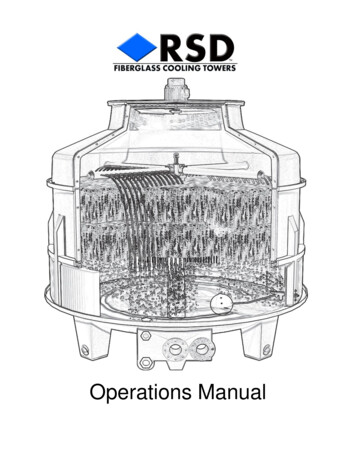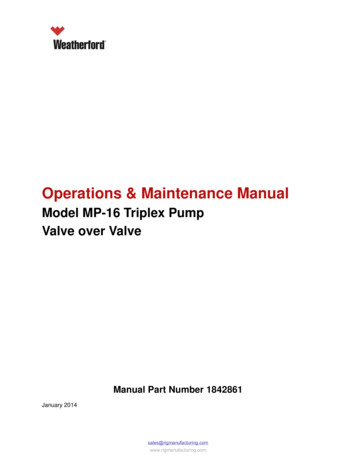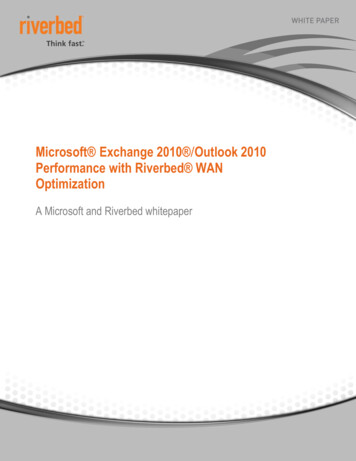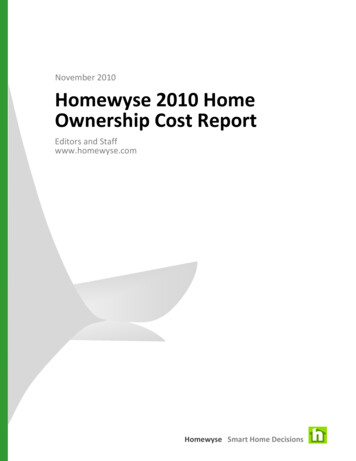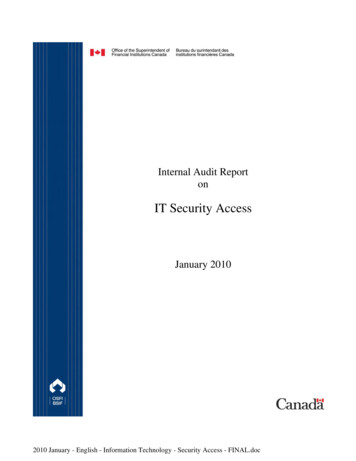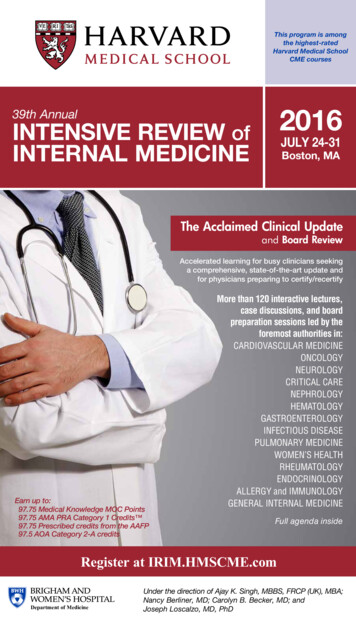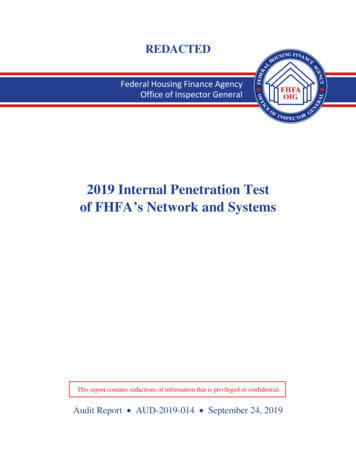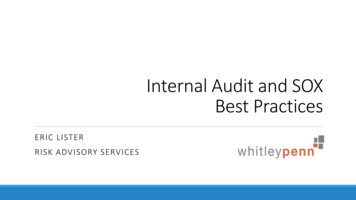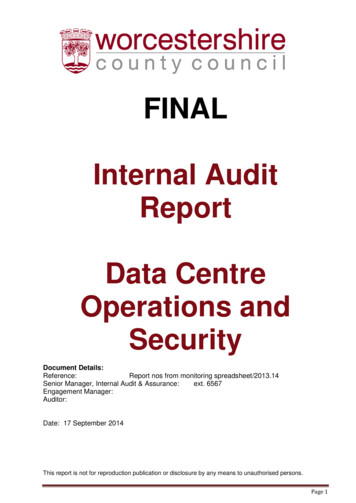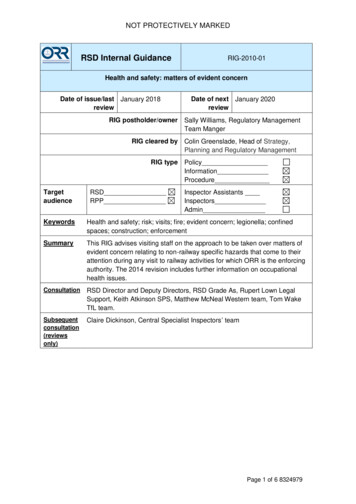
Transcription
NOT PROTECTIVELY MARKEDRSD Internal GuidanceRIG-2010-01Health and safety: matters of evident concernDate of issue/last January 2018reviewDate of next January 2020reviewRIG postholder/owner Sally Williams, Regulatory ManagementTeam MangerRIG cleared by Colin Greenslade, Head of Strategy,Planning and Regulatory ManagementRIG type ector AssistantsInspectorsAdminKeywordsHealth and safety; risk; visits; fire; evident concern; legionella; confinedspaces; construction; enforcementSummaryThis RIG advises visiting staff on the approach to be taken over matters ofevident concern relating to non-railway specific hazards that come to theirattention during any visit to railway activities for which ORR is the enforcingauthority. The 2014 revision includes further information on occupationalhealth issues.ConsultationRSD Director and Deputy Directors, RSD Grade As, Rupert Lown LegalSupport, Keith Atkinson SPS, Matthew McNeal Western team, Tom WakeTfL team.Subsequentconsultation(reviewsonly)Claire Dickinson, Central Specialist Inspectors’ teamPage 1 of 6 8324979
NOT PROTECTIVELY MARKEDDetail1. ORR staff should be mindful that we regulate industry duty holders’management of all risks arising from work activities that are allocated to us bythe Health and Safety (Enforcing Authority for Railways and Other GuidedTransport Systems) Regulations 2006. Whilst our site visits are planned andtargeted at particular risk areas, we have a responsibility to react to otherserious risks that may become apparent during visits. This RIG explains what isexpected of visiting staff in respect of matters of evident concern and givessome examples of such risks that may be encountered, i.e. these are thingsyou should not walk past.2. Matters of evident concern are defined as those matters that create animmediate risk of serious personal injury to the workforce or others, or seriousill-health and which are observed or brought to the attention of visiting staffduring interventions, for example by safety representatives. Colleagues are notrequired to proactively inspect these hazards unless they are part of a plannedintervention but should never fail to address serious risks found on siteregardless of the purpose of the visit.3. Whilst this RIG deals specifically with non-railway specific or generic healthand safety risks, visiting officers should continue to deal immediately with anyother railways-related matters of evident concern that they encounter duringtheir visits, using appropriate action to address any deficiencies. See RIG 2011044. The following list describes some examples of non-railways specific issuesthat might give rise to matters of evident concern. This list is not exhaustive: Fire/explosion:o LPG bulk storage and associated pipework (e.g. undergroundpipework, security of storage and risks from moving plant/vehiclesaround storage tanks and pipework;o Storage/use of flammable liquids/solids;o Means of escape in case of fire (e.g. blocked/locked or no fire exits); Entry into confined spaces without adequate precautions; Construction related risks:o Unsupported trench work;o Unsafe lifting operations;o Working at height (e.g. seriously defective or overloaded scaffolding,unsecured ladders or open edges during roof-work, or maintenanceof large plant) Occupational health risks:o evaporative water cooling systems (wet cooling towers) or trainwashes with attendant legionellosis risk (e.g. failure to managewater-borne risks);o Situations where cleaning (inside or underside of trains, effluenttanks in depots) where potential for microbial infection and anapparent lack of personal protective equipment;Page 2 of 68324979
NOT PROTECTIVELY MARKEDoooooooLead: for example in dry blasting of lead based paint, spraying oflead based paint, and any high temperature work with lead 500 0C.Silica: including any abrasive blasting using sand or othermaterial containing free silica; cutting, breaking, chasing, orgrinding of stone, concrete or brick without suitable RPE; andmechanised ballast handling operations (e.g. renewals andenhancement work) without suitable RPE.Noise: where exposures likely to exceed L epd85DB and nopersonal hearing protection provided.Known asthmagens: including spraying of isocyanate basedpaint.Solvent vapour: from paint spraying in poorly ventilated areas(indoors and sheeted enclosures in stations and railway bridges,for example);Asbestos: in any work including construction, demolition,refurbishment, or maintenance on railway buildings and otherstructures, e.g. lineside cabinets;Musculoskeletal Disorders: manual handling involving loads 50kg or that involve team lifts of more than 4 people shouldnormally be seen as unacceptably hazardous5. It is likely that action to deal with a matter of evident concern will involveformal enforcement of IN, PN and/or prosecution as indicated by theEnforcement Management Model.6. Colleagues should be aware of the limits of ORR’s vires, detailed in thememorandum of understanding between ORR and HSE and under the Healthand Safety (Enforcing Authority for Railways and Other Guided Transportsystems) Regulations 2006 (EARR). There are activities within railwayspremises that other enforcing authorities will have the vires to address e.g. HSEfor licensed asbestos work, HSE or Local Authorities for cooling towers at somelocations such as offices, and Fire Authorities for certain fire precautions such asmeans of escape. Where the level of risk is high, and ORR does not have thevires to act, the matter should be brought to the attention of the dutyholders’ responsible person on site, urging them to take immediate actionto deal with that risk. The matter must also be referred to the appropriateenforcing authority by the quickest practical means, and confirmed inwriting.7. For the basic level of awareness of non-railway issues, self learning willgenerally provide the necessary understanding for colleagues to be alert tomatters of evident concern.8. The HSE guidance How to control risks at work contains chapters on specificrisk areas and is valuable background reading material. It can be downloadedfree from the HSE website: ge 3 of 68324979
NOT PROTECTIVELY MARKEDMore specific guidance below gives further detail on topics:Page 4 of 68324979
NOT PROTECTIVELY MARKEDGuidanceBulk LPG storage: lpg.pdfFlammable liquids: Safe use and handling of flammable liquids dfConfined spaces: Safe working in confined spaces INDG 258Confined spaces section of the HSE uction: Health and Safety in Construction HSG150Managing health and safety in construction L144Lifting Operations and Lifting Equipment Regulations 1998. Approved Code ofPractice and Guidance ealth RisksLegionella: bacteria in wet cooling towers and other water systems withattendant legionella risks.HSE Guidance: The control of legionella bacteria in water systems, approvedcode of practice and guidance (L8) revised 2013:http://www.hse.gov.uk/pubns/books/l8.htmOther HSE htmLead: http://www.hse.gov.uk/lead/Known g/og-00016.htmSolvent ca: ise: http://www.hse.gov.uk/noise/Asbestos Essentials mHSE guidance can be downloaded from the HSE Guidance for RegulatorsInformation Point http://www.hse.gov.uk/grip/fod/index.htmPage 5 of 68324979
NOT PROTECTIVELY MARKEDActionVisiting staff should note the content of this RIG and be aware of the possibilityof finding matters of evident concern during visits. They should familiarisethemselves with the guidance so that they can recognise when serious risks arenot adequately managed.Matters of evident concern, which are not being actively managed by thedutyholder, should normally result in formal enforcement action (IN, PN and/orprosecution) being taken by the appropriate enforcing authority in line with theEnforcement Management Model.Page 6 of 68324979
RSD Internal Guidance RIG-2010-01 Health and safety: matters of evident concern Date of issue/last review January 2018 Date of next review . o evaporative water cooling systems (wet cooling towers) or train washes
